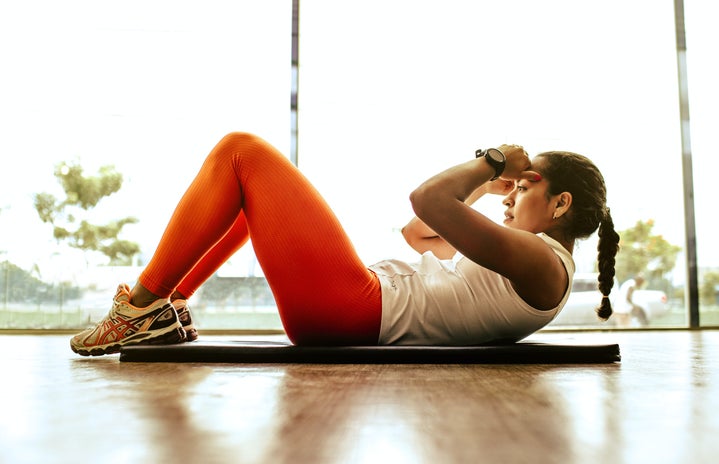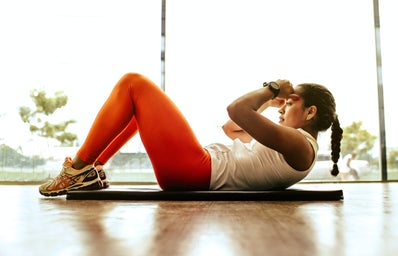You may have watched your friends run the Holy Half this year and thought, “I can do that.” It probably crossed your mind as you stood waiting in the finish line watching runner after runner receive their medal or maybe it was after your friend’s triumphant finish as you all munched on bagels. Perhaps it even occurred to you around sign-ups, which were full before you managed to talk yourself into running 13.1 miles. When it occurred to you doesn’t matter, it just matters that you manage to secure a race spot before they fill up. Here’s some advice from a first time Holy Halfer on things you should know.
1. The first 3-5 miles never really gets easier.
If you’re fairly new to running like I was, you’re probably thinking, “no way.” Well, sadly it’s true. Your first few miles may get faster and you’ll certainly get better at running, but miles 3 and 4 are still probably going to suck, no matter how much you train.
2. You NEED to find a training plan that works for you.
Find a plan that starts at your level and will help you achieve whatever goals you set for yourself. I started with an Adidas micoach plan and switched over to the Holy Half’s suggested training plan. I heartily recommend it, because it’s about going the distance, not how fast you get there.
3. Start running before training for the Holy Half.
It really helps if you start training more than the recommended 10 weeks out. And it’s even better if you already run sometimes or regularly before you commit to two and a half months of training.
4. Pick a good pair of shoes.
Your adorable Nike Frees may be great fitness fashion and even perfectly fine for going to Rolf’s, but get a pair of shoes that fits well and properly supports you. Running stores can help you find the right pair of shoes for your stride. I had a problem with my shoes where my feet would go numb after the first two miles or so for awhile and it sucked. Train in the shoes you’re going to run in; don’t buy new ones too close to the race.
5. Invest in proper running gear.
On the plus side, you now have an excuse to go shopping. On the down side, exercise clothing is expensive. Think ahead and ask for new clothes for Christmas. Make sure you have enough sports bras to avoid having to do laundry too often (for running and cross training), a cold running band and gloves if you’re temperature sensitive, good running tights, Under Armour, sweatshirts and dri-FITs.
6. Training in winter sucks.
Winter in general kind of sucks, but training during the winter is a new animal. It’s a lot of freezing (or below freezing) mornings, and windy nights. You cannot let the cold keep your from running and you’re quickly going to find that trying to run more than about 3 miles inside will drive you nuts. You also shouldn’t run if the windchill is negative (or you may get borderline frostbite symptoms—whoops, it hurts). Some days you’ll have to switch crosstraining and running, but you can’t let the weather stop you or be an excuse for not training.
7. Don’t skip runs.
It goes without saying that you want to stick to your training plan as closely as possible. Don’t skip runs, it’s a bad habit, and if you lose momentum while training it’s hard to get going again.
8. Listen to your body.
You need to eat more and sleep properly and stretch. Give your body what it needs. Some days you’ll hit your stride and feel like you can fly and some days you’ll want to quit after two miles. Know when you can push yourself and when your body needs a break.
9. Blisters and/or chafing is a thing.
If you’re already an exercise guru, you probably know that blisters and/or chafing will happen. If you’re suffering from chafing of any kind, they make anti-chafe sticks (they kind of look like deodorant) and sports panties may be a good investment. As for blisters, they’re going to happen. Drain and bandage them as needed. If your heels are the problem, try bandaging them preemptively.
10. You will run faster on race day.
Most people will tell you that you will run faster on race day than in training. I was skeptical, but it worked for me. My first 3 miles or so were several minutes faster than I usually ran and as I result I finished sooner than I expected.
11. Give yourself more time to complete a run than you think it will take.
I always gave myself 15 minutes per mile when I was estimating how much time I would spend running in a day. I usually ran miles that were just under 13 minutes or a little over. Don’t fixate on the timing, just do it. Be mentally prepared for days when your body just isn’t having a good running day.
12. Showers and baths will be your favorite post-run activity.
On really cold days, I couldn’t wait to get home and lay in my tub. Hot showers and baths feel great after a long, cold run.
13. Don’t try to run the full distance before the race.
Training plans don’t have you running the full 13.1 miles, so don’t decide to run it yourself. Let race day be the big accomplishment and don’t tire yourself out beforehand. Scheduled rest days and shorter runs are there for a reason.
14. You will be more tired than you can imagine after the race.
I was sore, sweaty, hungry and stiff after the race. I also got very cold, very quickly. Be sure to eat a good meal after the race (FYI: the bagels always run out early, they were out by the time I finished). Do some stretching after the race and take a nice hot shower. Hydrate, hydrate, hydrate. You can’t drink enough water and a Gatorade or Powerade can help restore some electrolytes. You probably will just want to crawl in bed under the covers, let yourself do it.
15. You can and will run 13.1 miles.
I started being able to run 3 miles. On race day, I more than quadrupled that distance. You may feel a crushing sense of despair somewhere around the end of the first loop, but the second lap around campus will fill your with determination. You may question your sanity and why you decided to run 13.1 miles, but you will feel victorious upon crossing the finish line. I leave you with one last bit of advice, my personal motto for training and running the Holy Half: It doesn’t matter how slow you go, as long as you don’t stop.
Follow HCND on Twitter, like us on Facebook, Pin with us and show our Instagram some love!
Images: provided by author

